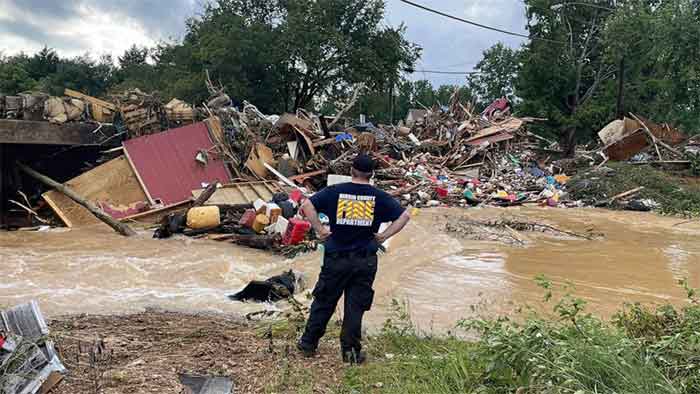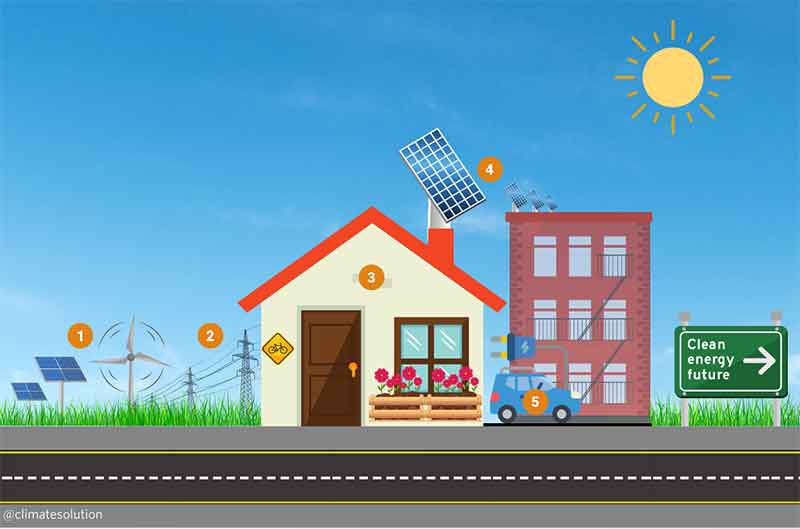
Much of infrastructure in the U.S. is already at risk of being shut down by flooding, and as the global warming continues, the threat is expected to grow. a new report finds
One-in-four pieces of all critical infrastructures in the U.S. including police and fire stations, hospitals, airports and wastewater treatment facilities face substantial risk of being rendered inoperable by flooding, according to the report released October 11, 2021 by the First Street Foundation, a nonprofit research and technology group that assesses the threat posed by flooding across the U.S.
Geographically speaking, the report found flood threats will increase most along the Atlantic and Gulf coasts, but significant increases in vulnerability are also projected across large portions of the Pacific Northwest.
The report also found nearly 2 million miles of road — 23% of U.S. roadways — are already at risk of becoming impassable due to flooding.
The researchers examined five categories across the Lower 48 and the District of Columbia: Critical infrastructure; social infrastructure, including museums, government buildings and schools; roads; commercial properties; and residential properties.
The report used estimates of operational flood risk from official governing bodies to determine the amount of inundation it would take to knock different types of facilities or services offline. The researchers then overlaid the kinds of flood events that can be expected in an area at least once every two years to gauge community risk.
The ground zero for flood danger in the U.S. is Louisiana.
The state is home to six of the top 20 most at-risk counties in the country. Cameron Parish in southwest Louisiana is the most vulnerable county in the U.S., followed closely by Orleans Parish, which includes New Orleans.
In both Cameron and Orleans Parish, the report finds more than 94% of all critical infrastructures — including police and fire stations, which are critical to emergency response operations after disasters like hurricanes — are at risk of being knocked offline.
Florida is also home to some of the most flood-prone counties in the U.S., but flood risk is not confined to coastal areas. Many areas in Appalachia, like McDowell County in West Virginia and Johnson County in Kentucky, are also among the most at-risk because of the growing threat of heavy rain, the First Street researchers said.
Over the next 30 years, the number of residential properties at risk of flooding in the U.S. is expected to grow from 12.4 million today to 13.6 million by 2051, the report says. For critical infrastructure and commercial properties, the number of vulnerable facilities is projected to grow by 6% and 7% respectively over the next three decades.
First Street’s earlier reports focused on the unknown risk of flooding faced by US homeowners, and the inadequate flood insurance coverage many of them have or, often, do not have. Experts say comprehensive assessments like the new report are critical as the country weighs how to adapt to a climate-altered future.
Jeremy Porter, First Street’s head of research and development, said while New Orleans has adapted its infrastructure and levees to hold off stronger storms, continued sea level rise and more destructive hurricanes could eventually overwhelm the city’s current defenses.
“It is going to have to continually be updated as the environment changes in the future,” Porter said. “The infrastructure that is in place today is not going to protect New Orleans in five, 10, 15 years. That is only going to get worse as sea level rises, as storms not only become more frequent but become stronger.”
As global warming melts ice sheets, raises sea levels and tilts the odds in favor of more extreme rainfall events, the risk will grow in many more communities, the First Street report found.
A warmer atmosphere can hold more water, which makes extreme rainfall events dumping massive amounts of water in short periods of time more likely.
Flooding is already the most common and costly disaster in the U.S., according to congressional testimony this year from FEMA deputy associate administrator David Maurstad.
“Because of the impacts of climate change, there are communities across the U.S. that are going to have tough decisions in the years to come because of sea level rise and intensity of storms,” Maurstad told. “It is not just the coast of Louisiana.”
The threat of flooding is growing rapidly in the U.S. A series of devastating floods this summer killed dozens of people and caused billions of dollars in damages from Louisiana to Tennessee and New York City.
















































